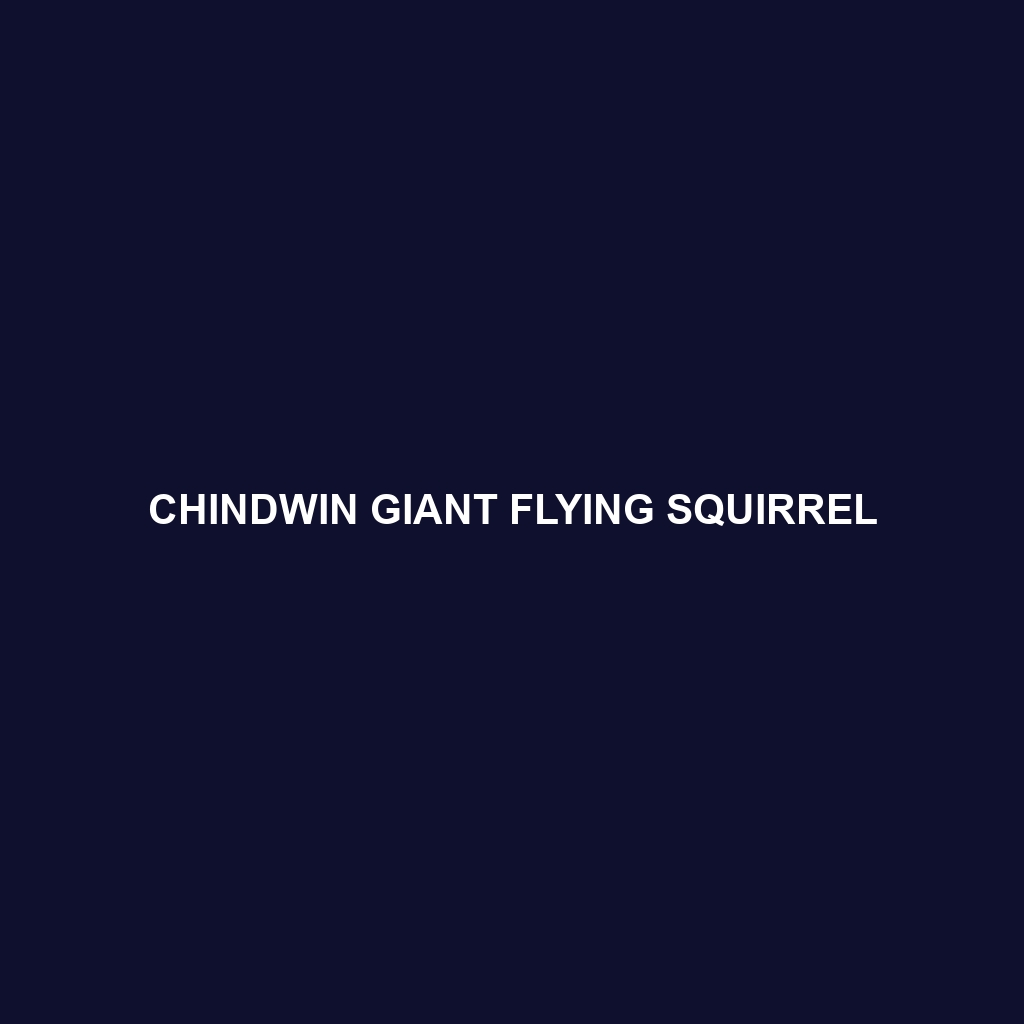Chindwin Giant Flying Squirrel
Common Name: Chindwin Giant Flying Squirrel
Scientific Name:
Habitat
The Chindwin Giant Flying Squirrel primarily inhabits the lush forests of the Chindwin River Basin in northwestern Myanmar. These habitats are characterized by tropical and subtropical moist broadleaf forests, offering dense canopies and rich biodiversity. The species prefers areas with abundant tree coverage and suitable nesting sites, making it well-adapted to its arboreal lifestyle.
Physical Characteristics
The Chindwin Giant Flying Squirrel is known for its impressive size, often reaching lengths of up to 60 centimeters (23.6 inches) from head to tail. Its fur is predominantly a rich brown or gray, with lighter underparts that help it blend into the forest canopy. A distinctive feature of this species is its membrane, which stretches from its wrists to its ankles, enabling it to glide gracefully between trees. Its large eyes are adapted for night vision, allowing it to forage efficiently in low-light conditions.
Behavior
This species is primarily nocturnal, with ideal activity patterns that lower competition for food and reduce predation risks. The Chindwin Giant Flying Squirrel is known for its gliding ability, which it uses to navigate through the forest. Socially, they can be found in small family groups, often communicating through high-pitched calls. Their agility and coordination signify a fascinating aspect of their behavior, attracting interest from wildlife enthusiasts.
Diet
The diet of the Chindwin Giant Flying Squirrel consists mainly of fruits, nuts, and tree bark, showcasing its role as a frugivore. They have been observed feeding on a variety of plant materials, including seeds and flowers, making their feeding habits essential for forest regeneration. In addition, their foraging practices contribute to seed dispersal, which benefits the overall ecosystem.
Reproduction
The Chindwin Giant Flying Squirrel typically breeds once a year, with the breeding season occurring during the warmer months. After a gestation period of about 60 to 90 days, females usually give birth to one or two offspring. The young are born altricial, meaning they are born relatively helpless, and depend heavily on their mother’s care for survival. They begin to glide and forage independently at around four months of age.
Conservation Status
Currently, the Chindwin Giant Flying Squirrel is classified as vulnerable by the International Union for Conservation of Nature (IUCN). Habitat loss due to logging, agriculture, and human encroachment poses critical threats to its survival. Conservation efforts focusing on habitat protection and reforestation are crucial for safeguarding the future of this remarkable species.
Interesting Facts
– The Chindwin Giant Flying Squirrel is one of the largest species of flying squirrels in the world, making it a remarkable sight in the wild.
– Despite their size, these squirrels are incredibly agile and capable of gliding distances of up to 150 meters (492 feet) between trees.
Role in Ecosystem
The Chindwin Giant Flying Squirrel plays a significant role in its ecosystem as both a seed disperser and a prey species for larger predators. By feeding on fruits and nuts, they facilitate seed germination and contribute to forest biodiversity. Their presence helps maintain the health of forest ecosystems, showcasing the interconnectedness of wildlife and their habitats.
